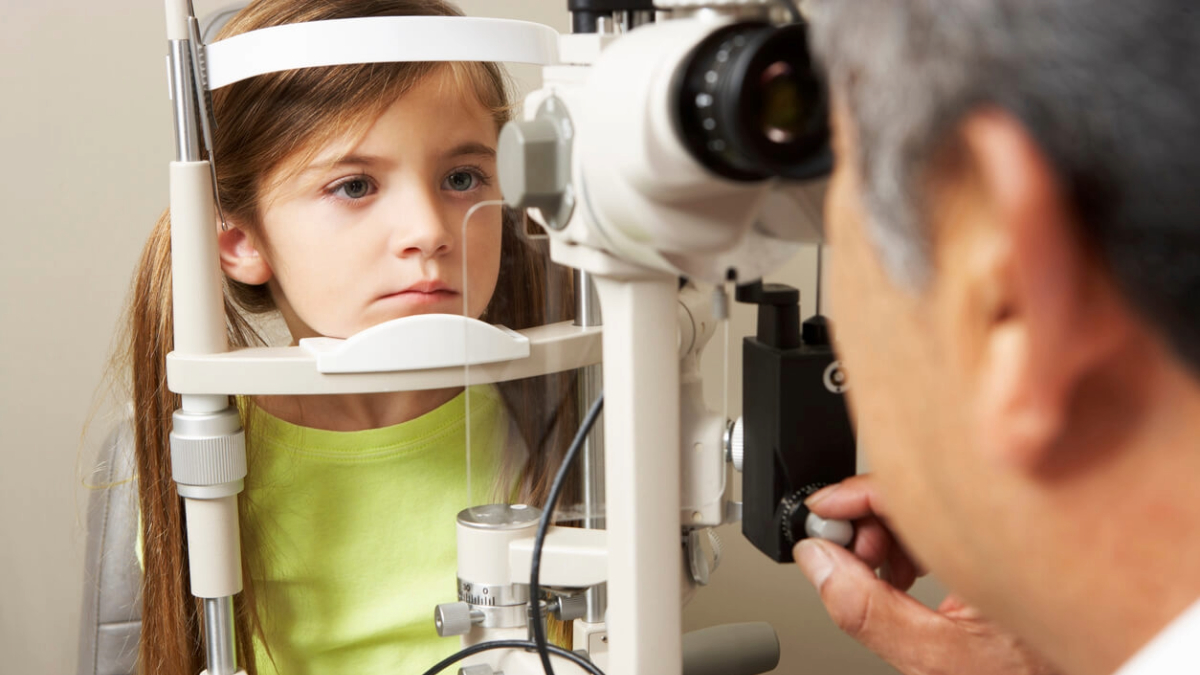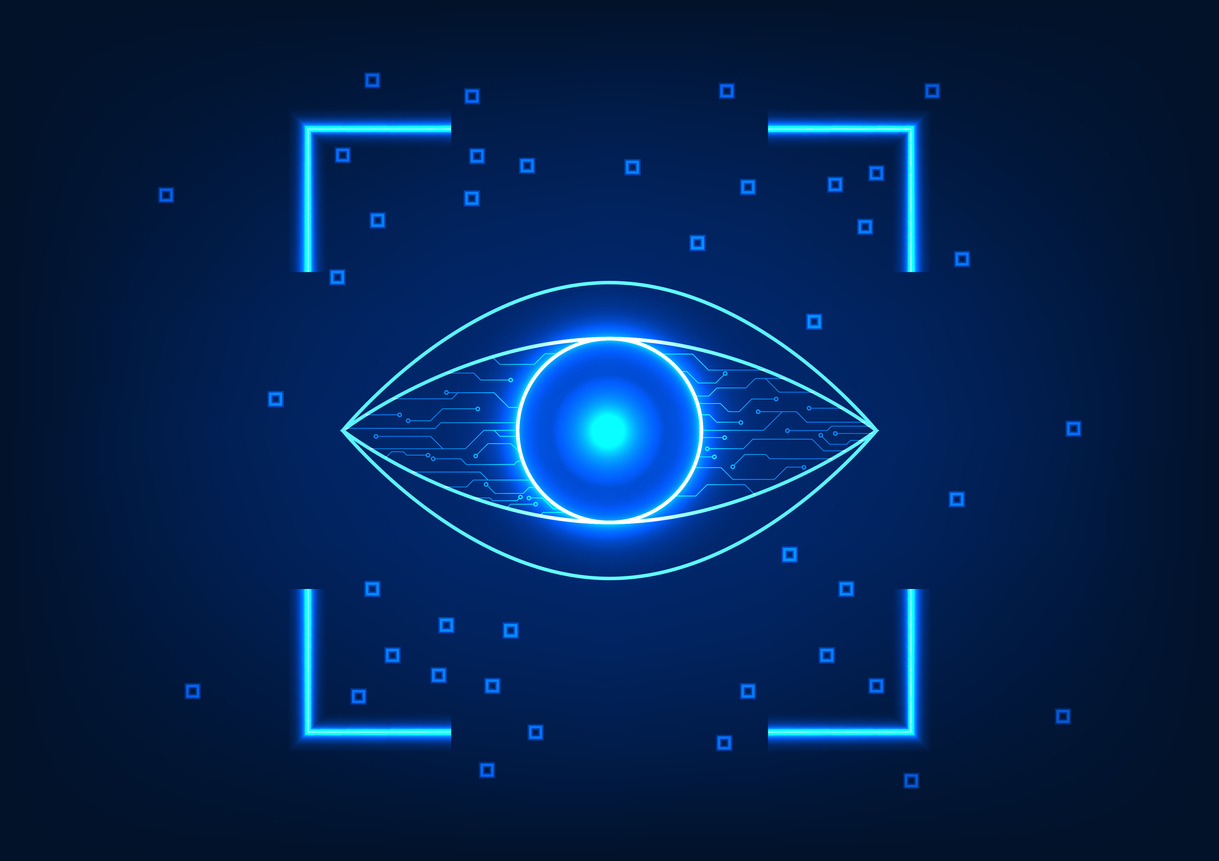
Learn about the various forms of childhood glaucoma, as well the associated risk factors, examination procedures, and treatments.
Congenital, Infantile, and Juvenile Glaucoma
Childhood glaucoma is a disease of the optic nerve that is often associated with elevated eye pressure. There are many different types of childhood glaucoma, and one way of categorizing them is by the age of onset. For example, primary congenital glaucoma is present at birth, whereas infantile glaucoma is present from 1-24 months of age. Glaucoma that develops after these ages could be considered juvenile glaucoma.
While these categories are just based on age, what may be more relevant is to distinguish the glaucoma based on the eye structure that is abnormal or other related medical conditions.
Developmental Glaucoma
Many of the childhood glaucomas are associated with single gene mutations that affect the development of the eye. Most are considered developmental glaucomas. For example, children with the PAX6 mutation have abnormal eye development such that the iris (colored part of the pupil) does not form (this is called aniridia), and the abnormal eye development also results in glaucoma. Other types of developmental glaucoma include Axenfeld-Rieger syndrome, aniridia, and neurofibromatosis. We discussed aniridia above, but as another example, Axenfeld-Rieger syndrome is caused by mutations in the PITX2 or FOXC1 genes. Parts of the eye do not develop properly, especially in the front part of the eye where the drainage system is, which leads to elevated eye pressure and secondary glaucoma.
Glaucomas associated with systemic disease
In Sturge-Weber syndrome, there is a congenital abnormality (but it is not inherited). People with this syndrome often have a port wine stain (an abnormal collection of blood vessels on the face), an abnormal vessel growth in the brain, and abnormal vessels in the eye. About half of patients with Sturge-Weber syndrome have glaucoma, which can be present at birth or later in life. People with Sturge-Weber syndrome should be monitored over their lifetimes by ophthalmologists.
Trauma
Glaucoma that is induced by trauma can occur during childhood, and sometimes does not manifest itself until the child is older. It is important that any child with a history of eye trauma be screened intermittently for the development of secondary glaucoma.
Eye Disorders
Glaucoma can also be secondary to other eye conditions that occur in childhood. For example, children who have had congenital cataracts removed, or who use chronic steroid eye drops for juvenile rheumatoid arthritis-associated eye inflammation, can develop glaucoma.
Despite the fact that glaucoma is often thought of as an older person’s disease, the young can also be affected, and it is important to identify this eye disease early before too much damage has occurred.
Watch: Congenital Glaucoma
Primary Congenital Glaucoma
The remainder of the article will focus attention on primary congenital glaucoma, which is relatively rare, occurring in 1 in 10,000 births. These infants are brought to the ophthalmologist when the pediatrician or the parents notice abnormalities of the eyes. The baby may have excessive tearing, sensitivity to light, and excessive blinking. Having excessive tears related to tear duct obstruction is much more common than congenital glaucoma in babies, but the distinction is that the tears related to tear duct obstruction often include discharge and crusting. Another sign of glaucoma that parents often notice is that the round, dark part of the infant’s eye appears larger than normal, or the cornea (the normally clear outside covering of the eye) is opaque or cloudy.
Examination Procedures
If primary congenital glaucoma is suspected, an examination under anesthesia coupled with appropriate surgeries are usually done together. This is because primary congenital glaucoma is typically considered a disease that requires early surgery, unlike adult glaucoma, where eye drops or laser are usually tried first.
Surgery is often performed at the same time the baby undergoes an examination under anesthesia so that anesthesia does not have to be endured twice. During the examination, the ophthalmologist measures the baby’s eye pressure; inspects the entire eye, including the drainage angle and optic nerve; measures the size of the cornea and determines whether it is clear or cloudy; and measures the size of the eye, since in congenital glaucoma the eyeball will be larger than normal. As the child grows older, the examinations move from the operating room to the clinic, and children are evaluated similarly to the way adults are examined, including the use of visual field testing and optic nerve imaging.
Treatment
Surgery for primary congenital glaucoma includes goniotomy and trabeculotomy, procedures which open the drainage systems of the eye, and can be very successful. Other surgeries include trabeculectomy and tube shunt surgery, which are also performed in adults.
For goniotomy or trabeculotomy, the drainage system is opened by removing the front part of the drainage tissue 360 degrees.
In trabeculectomy, a small hole is made in the eye to help lower the eye pressure. In tube shunt surgery, a tube is inserted into the front of the eye to help lower the eye pressure.
Although surgeries can be very successful, the child will need to be followed routinely because the eye pressure can begin to increase again over time. In order to get the eye pressure controlled, sometimes multiple examinations and procedures under anesthesia will need to be performed.
Even when the treatment is successful, eye drops may be used afterward to help keep the eye pressure optimal. It is critical for children to have long-term follow-up appointments with an eye doctor even after successful therapies have been implemented. In addition, children with glaucoma may develop nearsightedness (related to the larger eyeball size) and need glasses. Also, some children with glaucoma may develop vision impairment due to amblyopia or a crossing or wandering eye (strabismus) and require further treatment for these conditions. In most cases, the child may be referred to a pediatric ophthalmologist for further evaluation and treatment.
Summary
Early diagnosis and treatment are of paramount importance in childhood glaucoma. Children with glaucoma can lead vibrant and full lives; however, this eye disorder can result in permanent and significant vision impairment, so proper follow-up and adherence to treatment are keys to better outcomes.
About BrightFocus Foundation
BrightFocus Foundation is a premier global nonprofit funder of research to defeat Alzheimer’s, macular degeneration, and glaucoma. Through its flagship research programs — Alzheimer’s Disease Research, Macular Degeneration Research, and National Glaucoma Research— the Foundation has awarded nearly $300 million in groundbreaking research funding over the past 51 years and shares the latest research findings, expert information, and resources to empower the millions impacted by these devastating diseases. Learn more at brightfocus.org.
Disclaimer: The information provided here is a public service of BrightFocus Foundation and is not intended to constitute medical advice. Please consult your physician for personalized medical, dietary, and/or exercise advice. Any medications or supplements should only be taken under medical supervision. BrightFocus Foundation does not endorse any medical products or therapies.
- Eye Health










